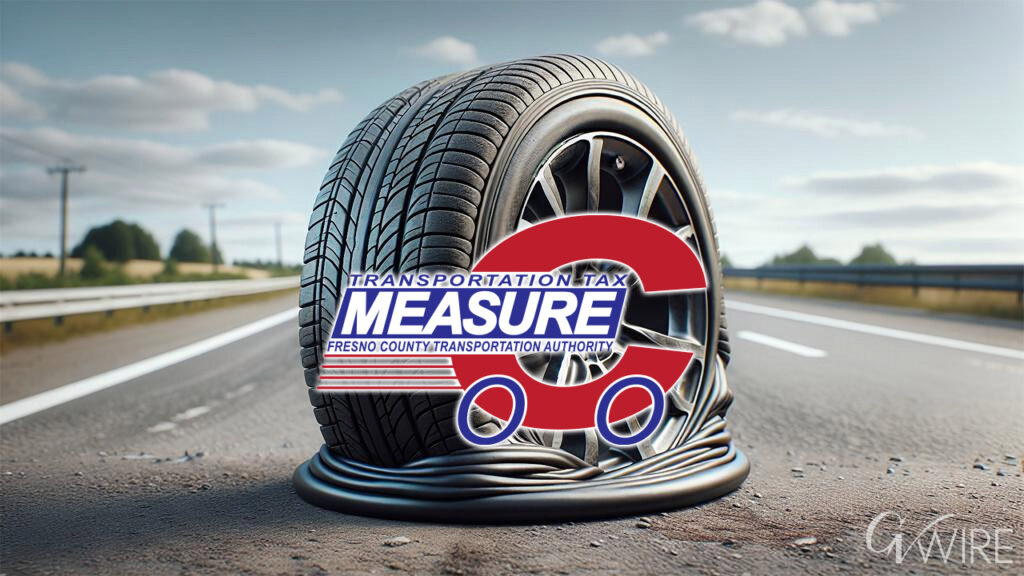Share
Fresno County is projected to need 6.1 million tons of aggregate yearly to meet the need for concrete and asphalt, according to estimates from mining company CEMEX Construction.
A four-year extension from Fresno County keeps alive one of only three mining operations in the area essential for road repair and development.
The permit allowing CEMEX to operate along the San Joaquin River was set to expire July 28. The company requested four more years so the county can finish the environmental impact report required for them to dig deeper and continue for another 100 years.
The company began the process to renew their permit with Fresno County back in 2019.
Senior Planner David Randall said an EIR can take anywhere from 14 months to 10 years. Companies do not control the EIR process. Fresno County contracts with consultants, then companies reimburse the county.
An EIR for a quarry can cost between $7 million and $12 million, Matthew Estipona, a director with the Associated Builders & Contractors said.
CEMEX Wants to Dig Deeper
Beneath their quarry site just south of Lost Lake, alluvial deposits used in asphalt and ready-mix concrete exist. CEMEX leaders want to dig as deep as 600 feet over the next 100 years.
At that depth, they don’t need to expand their footprint, the report from CEMEX stated. The quarry is currently around 60 feet deep.
Just south of the quarry is the CEMEX plant. They want to finish mining at the plant site over the next 30 years before relocating completely to the quarry site. The 122-acre plant would then be repurposed for open space and wildlife habitat.
Mining at the 349-acre quarry site would continue for 100 years total.

Friant Residents, City Say CEMEX Has Increased Air, Noise Pollution
The last EIR for CEMEX was completed in 1986, and neighbors of the plant as well as the city of Fresno say that’s been too long.
Friant residents as well as the city opposed the extension, saying the EIR needed to be done first.
The mine dates back to 1913, but now that the area has become populated, the increased noise and air pollution has impacted the lives of Friant residents, said Surjit and Kanwal Singh in a letter.
Jennifer Clark, director of the Planning and Development Department with the city of Fresno said the number of truck trips at CEMEX are out of compliance with the nearly 40-year-old EIR.
There are 650 daily truck trips according to the Fresno County staff report. A permit in 2004 only allows up to 225 truck trips hauling material. Randall said the 650 trips in the report includes all vehicle traffic including employees leaving the plant. The new EIR would provide a better picture of the number of trucks going in and out of the plant.
Friant resident Diane Durando lives 150 feet from the edge of the CEMEX property, according to a letter she penned to the Fresno County Planning Commission. She said issues around well contamination and air pollution show the need for an EIR to be completed before allowing the extension.
“It is unconscionable on the county’s part to not see the need for the independent and proper studies to safeguard the health and safety of the public and the San Joaquin River,” Durando wrote.
Importing Aggregate is Expensive, Costly
Estipona said importing aggregate is expensive.
There are three companies that provide concrete and asphalt within a 20-mile radius of Fresno — CEMEX, Vulcan Materials Company, and Fresno Asphalt.
The quarry produces an average of 1 million tons of aggregate annually. The expanded production would produce 3 million tons annually. Going down to 600 feet means the company doesn’t need to find a new location or go wider, the report from CEMEX stated.
Concrete and asphalt from CEMEX has been used for the construction of Highways 41, 99, 168, and 180. It has been used for projects at Clovis Community Medical Center as well as Clovis Community College, according to the company’s presentation.
Fresno politicians have spoken out for the dire need for road repair. Deferred maintenance for Fresno streets totals $800 million, said Fresno City Councilman Nelson Esparza in a previous interview.
Development in Fresno County is projected to use 6.1 million tons of aggregate annually, according to CEMEX’s estimates.
Short of the quarries in Sanger and Friant, asphalt would have to come from Coalinga, Avenal, and Madera.
“Without local sources of aggregate, local construction projects will need to import aggregate from mine sites located much farther away in other counties,” said James Hammond, business manager for the Fresno Chapter of the Laborers International Union of North America in a letter to Fresno County.
Hammond said keeping operations at CEMEX would reduce traffic and air pollution.
EIR Gives Public a Chance to Respond
The EIR process is not just to explain things, said Randall, but also to learn things that otherwise would not be known.
Every comment made during the 45-day comment period must be addressed, said Randall. Sometimes it is a simple “thank you for the comment,” but if there is a factual objection, consultants may have to go back to review their findings.
Two mining projects in Fresno County and one in Madera took four years to be approved after the draft EIR was published, according to the presentation by CEMEX. One in Fresno County took a year.
Policy makers need to determine if the project creates a significant impact under 20 different categories specified in the California Environmental Quality Act. Objections to a project can lead to years in court over CEQA complaints.
The EIR is about 65% completed, according to the CEMEX presentation. They estimate another six to 12 months before the draft EIR is finished.
RELATED TOPICS:
Categories

American Architect Frank Gehry Dies at Age 96


















